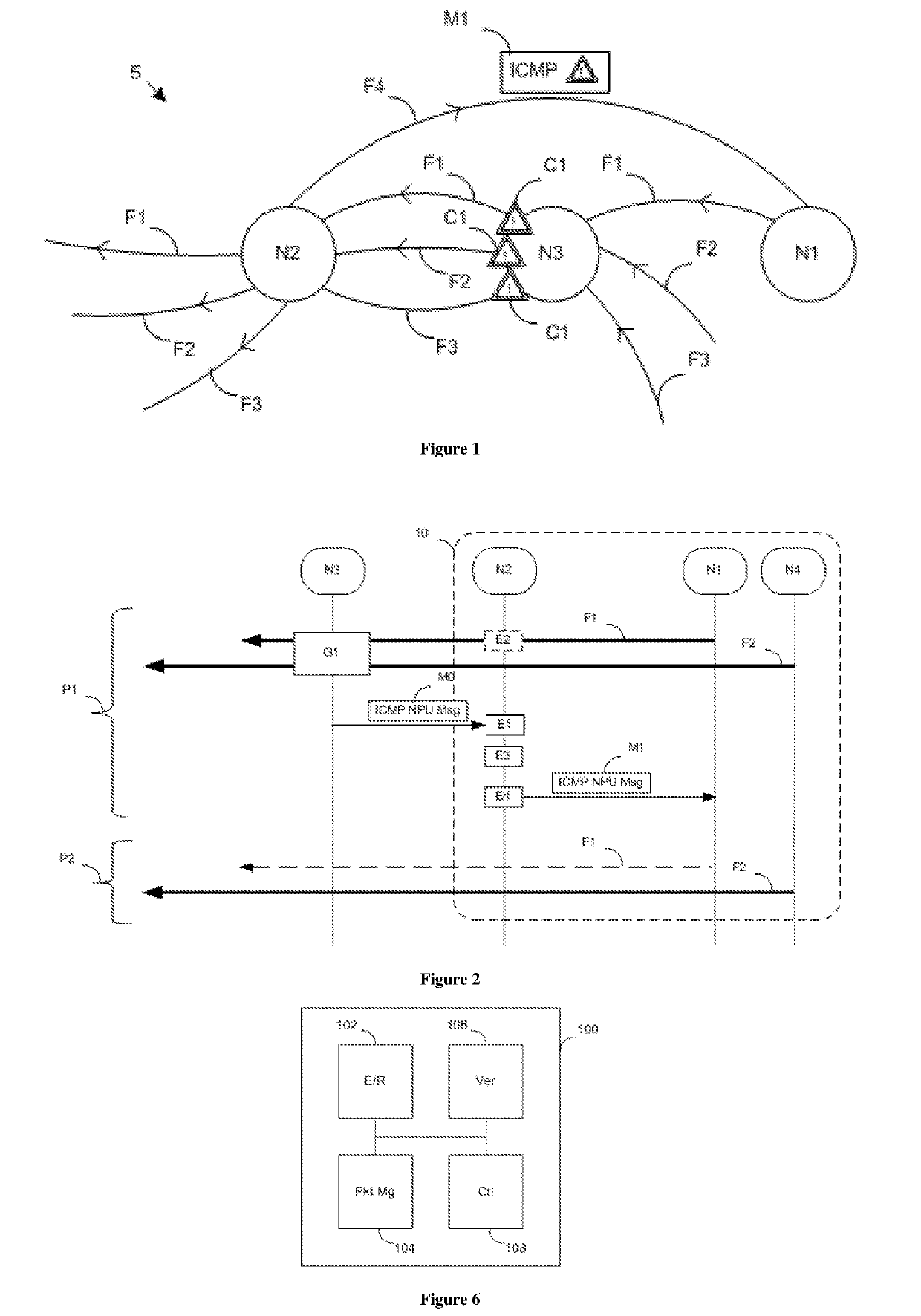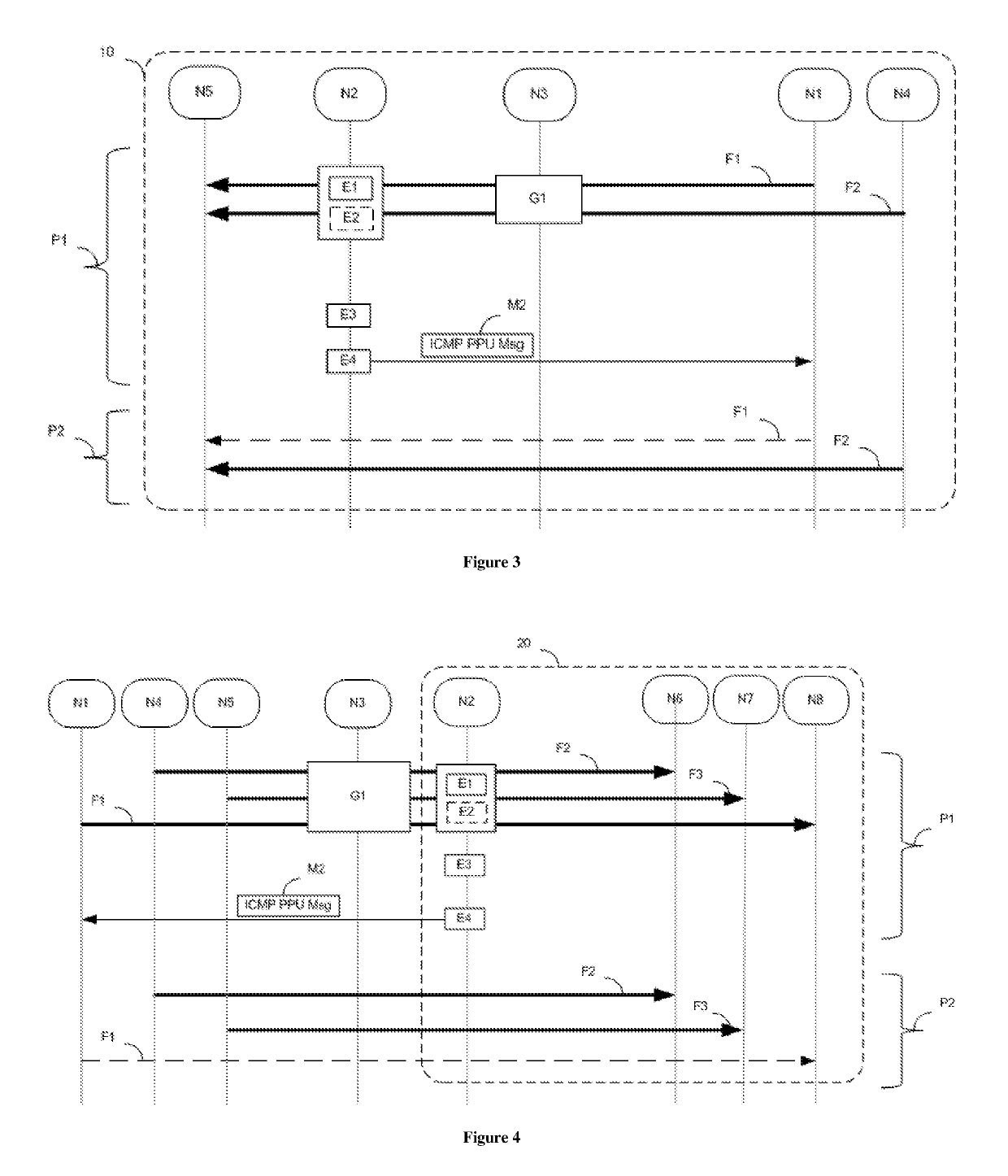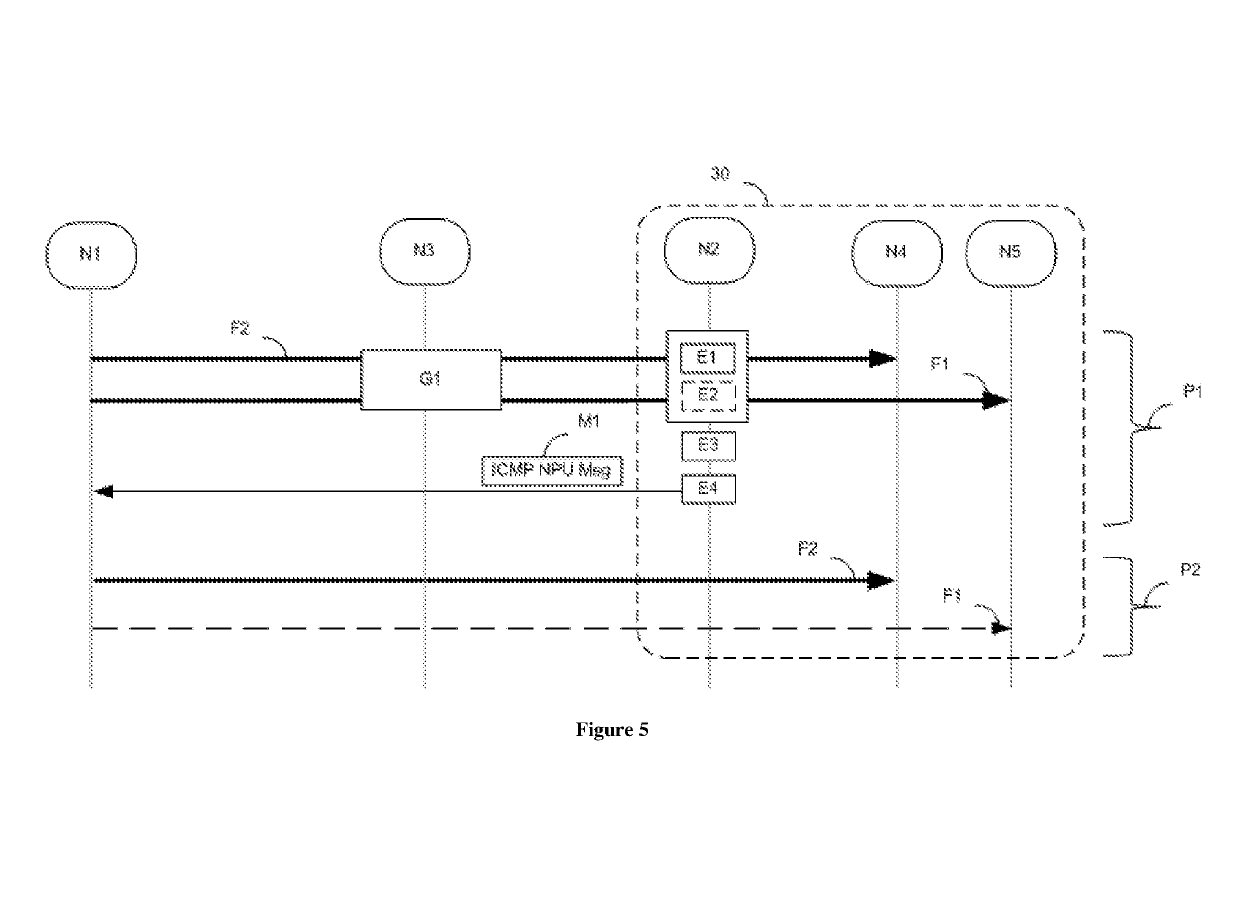Technique for signalling congestion in a packet communication network
a packet communication network and packet communication technology, applied in the field of packet communication networks, can solve the problems of delay in the signaling, delay in the transmitter taking measures to prevent or resolve congestion, and the equipment situated on the path can be affected by congestion, so as to reduce the bit rate of the transmitted stream, prevent or resolve congestion, and reduce the bit rate
- Summary
- Abstract
- Description
- Claims
- Application Information
AI Technical Summary
Benefits of technology
Problems solved by technology
Method used
Image
Examples
Embodiment Construction
[0041]FIG. 1 shows a system for signaling a piece of congestion information in a communication network 5 according to a particular embodiment. The communication network 5 is particularly a packet communication network. The system comprises three nodes N1, N2 and N3. A node is defined as an element involved in a service chain of a network. By way of nonlimiting example, it is physical equipment of a network (e.g. switch, router, firewall, GGSN, for “Gateway GPRS Support Node”) or even elements of a data processing center, “Data Center” (e.g. interconnection manager or “DCI manager”, for “Data Center Interconnection Manager”, operating system, controller). By way of illustrative example, the node N1 provides a file transfer service and the nodes N2 and N3 are routers.
[0042]The nodes N2 and N3 convey packets transmitted in one plane, referred to as transfer plane. Three streams F1, F2 and F3 of data packets are shown. More precisely, a stream is a succession of packets transmitted betw...
PUM
 Login to View More
Login to View More Abstract
Description
Claims
Application Information
 Login to View More
Login to View More - R&D
- Intellectual Property
- Life Sciences
- Materials
- Tech Scout
- Unparalleled Data Quality
- Higher Quality Content
- 60% Fewer Hallucinations
Browse by: Latest US Patents, China's latest patents, Technical Efficacy Thesaurus, Application Domain, Technology Topic, Popular Technical Reports.
© 2025 PatSnap. All rights reserved.Legal|Privacy policy|Modern Slavery Act Transparency Statement|Sitemap|About US| Contact US: help@patsnap.com



